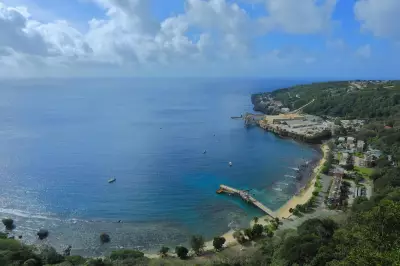
Investigation Launched Into Fatal Skydiving Plane Crash
The Australian air safety regulator has begun a detailed investigation into how a routine skydiving flight ended in tragedy above the picturesque South Coast in September. The incident resulted in the death of the 54-year-old pilot after his single-propeller aircraft went out of control.
The crash occurred near Moruya Airport on a Saturday afternoon, marking a devastating end to what should have been the plane's ninth and final skydiving release flight of the day. All eight parachutists had successfully exited the aircraft and landed safely before the pilot lost control.
The Final Moments Before Impact
According to the Air Transport Safety Board's preliminary report, the aircraft had taken off from Moruya Airport and climbed to the planned jump altitude of 15,000 feet. Recorded data shows the plane was in a gradual descent to 14,000 feet as the eight parachutists jumped out in what witnesses described as a completely normal exit.
The pilot confirmed via radio that the jumps were complete and he was returning to the airport. However, several witnesses on the ground then observed the aircraft enter a steep nose-down dive, rotating left before pitching up and rolling right.
ATSB Chief Commissioner Angus Mitchell stated that the Pilatus PC-6 ultimately hit the ground approximately 2.5 kilometres north of the airport. Investigators believe the plane's right wing first struck a tree and was sheared off, with the aircraft fuselage continuing to hit more trees before coming to a stop. The pilot was pronounced dead at the scene.
Critical Safety Systems Under Scrutiny
The investigation is concentrating on the electric systems controlling the aircraft's stability, specifically what aviation experts call the horizontal stabiliser electric trim system. This mechanism is crucial for maintaining level flight.
In a concerning development, investigators discovered that the pilot had left his seat and was wearing his own parachute, suggesting he was preparing to bail out of the stricken aircraft. Mr Mitchell confirmed that the investigation would examine how easy it was for the pilot to exit the plane once control was lost, given the aircraft's door configuration.
Evidence from the crash site indicated that the engine was producing power at the moment of impact, and investigators found no signs of pre-impact mechanical problems that would have prevented normal engine operation. All major aircraft components were located at the site.
As the investigation progresses, the ATSB will thoroughly examine the horizontal stabiliser trim system alongside recorded flight data, aircraft maintenance history, operational procedures, and pilot training records. The investigation will also consider survivability aspects given the pilot's position and equipment when the collision occurred.





